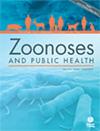Higher Hepatitis E Seroprevalence in Workers in the Pig Sector in Flanders, Belgium: Results From a Seroprevalence Case-Control Study
Abstract
Introduction
Autochthonous hepatitis E virus (HEV) infection in industrialised countries is a zoonosis. Pigs are recognised as the principal reservoir. Consequently, workers in the pig sector may be a high-risk occupational group for HEV infection. The current study aims to investigate whether workers exposed to pigs or pork have a higher seroprevalence of HEV IgG in comparison to a control group.
Methods
A cross-sectional study was conducted involving 92 individuals occupationally exposed to pigs or pork and 217 control subjects outside the pig sector. Socio-demographic variables, information about occupation, and a number of relevant confounding variables (such as eating habits, and history of blood transfusions) were gathered by a questionnaire. Serum samples were tested for anti-HEV IgG antibodies using an enzyme-linked immunosorbent assay (ELISA).
Results
Our study revealed a significantly higher seroprevalence of HEV antibodies in pig workers (32.6%) compared to the control group (9.2%) (p < 0.001). The relation between occupational exposure and HEV seropositivity remained significant in the multiple logistic regression analysis, in which the odds were adjusted for age, gender, and eating habits.
Conclusions
The results from this first HEV IgG serology study in the pig sector in Belgium demonstrate that workers in this sector have a higher risk for HEV infection compared to a population not occupationally exposed to pigs and pork. These findings underscore the need for targeted occupational health interventions, including improved hygiene practices and informing employees with risk profiles, to mitigate the risk of HEV infection among pig workers.

 求助内容:
求助内容: 应助结果提醒方式:
应助结果提醒方式:


